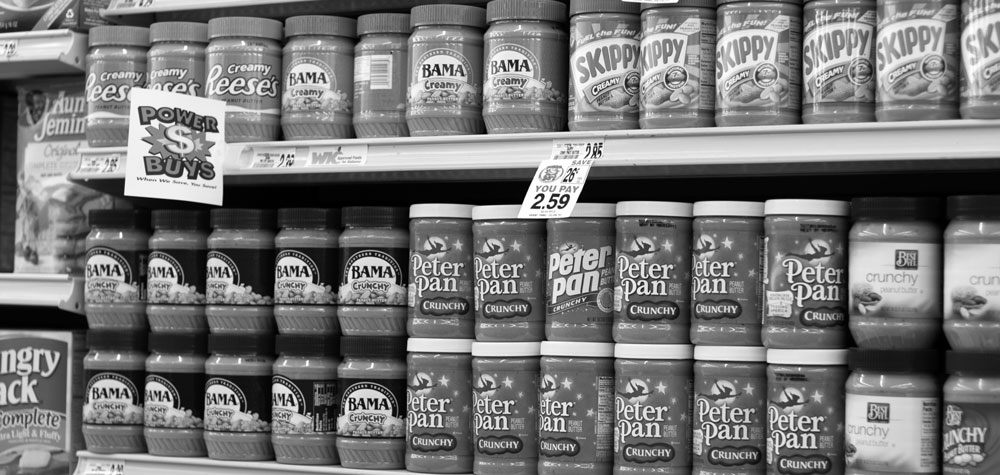by Kara Lilly, Investment Strategist, Mawer Investment Management, via The Art of Boring Blog
Just the other day, a friend posted the following question on his Facebook wall:
Would you rather give up your favourite food for the rest of your life or wake up every day with a 5% chance of being completely covered in peanut butter?
I pondered the question for a moment and then (against my better judgment) replied. Shortly thereafter, another friend offered this view:
“I vote peanut butter. It’s a 5% chance every day… it’s not a 5% chance of all your future days. I’d take number two.”
I grimaced a little when I read this. Although I know she is an intelligent person, she was making a blatant error with respect to the math. If you have a 5% chance every day, then you should reasonably expect to wake up in peanut butter 5% of the time over all your future days. My friend was underestimating the amount of instances that an improbable event would occur over a long enough time horizon (i.e., many trials).
This is a common failing in statistics. We treat a low-probability-negative event as so unlikely as to be almost impossible. Yet this is an error. When there are many trials (in this case the number of days you have left in your life to wake up), you can rationally expect the negative outcome will occur about as often as the probability says it will (in this case 5%). It’s like a coin toss. You may get some lucky and unlucky streaks; but the closer that the number of trials moves to infinity, the more you can expect that the instances of the negative outcome will converge to the stated probability—50%.
What should you expect when given a 5% probability of waking up every day in peanut butter? In a year with 365 days, you would expect about 18 peanut butter days. That’s a little over one per month.
Let’s say you live for 50 more years. You could reasonably expect 900 days of waking up like this— and 17,350 waking up PB-free.
Now, I realize the thought experiment above was supposed to be silly and fun. Arguably, it was not worth it for me to wade in with the math—but, while the scenario above is harmless, the knowledge of this logic certainly matters. There are many scenarios in life in which a similarly applied logic could have devastating consequences.
There are two important takeaways for the investor here:
- The improbable tends to happen far more frequently than people anticipate or—most importantly—plan for. For example: economies go through recessions; housing bubbles burst; companies go bankrupt; the banking system blows up; family members get sick; people lose their jobs; oil prices crater. This is why we need to make decisions that give us resilience to such events. This is true for our investment portfolios and other areas such as health.
- The cost of the improbable event is critical to understand. In the example above, the fun comes from hearing a friend’s perception of the pain of waking up in peanut butter. To some, awakening to find you are covered in an edible exfoliant sounds almost pleasant; whereas for me, the idea of even doing this five times sounds traumatizing (think of the bedsheets!). However, unless you are allergic to peanut butter, clearly the cost of this negative event is low.
Now, compare this to a scenario in which the costs are extremely high. For example, imagine that instead of waking up with a 5% chance of peanut butter, there was actually a 5% of complete financial ruin. This means you would expect to encounter financial ruin 18 days in a year (even though on any given day, the chances of success would be 95%).
Put this way, I suspect most people would easily forgo their favourite slice of pizza.
Although topics like this are great for debate, the math that underlies these kinds of questions is not. We need to recognize that an outcome with a low probability (say 5% or 30%)— if independent and there are many trials—is by definition still expected to occur at some point. We need to plan for the improbable… because it does happen.
P.S. Peanut butter is a delicious and healthy snack.
![]()
About Kara Lilly
Kara Lilly, CFA, is the Investment Strategist at Mawer Investment Management Ltd. She plays an active role in asset mix, risk management and the macroeconomic investment process. Learn more
This post was originally published at Mawer Investment Management















